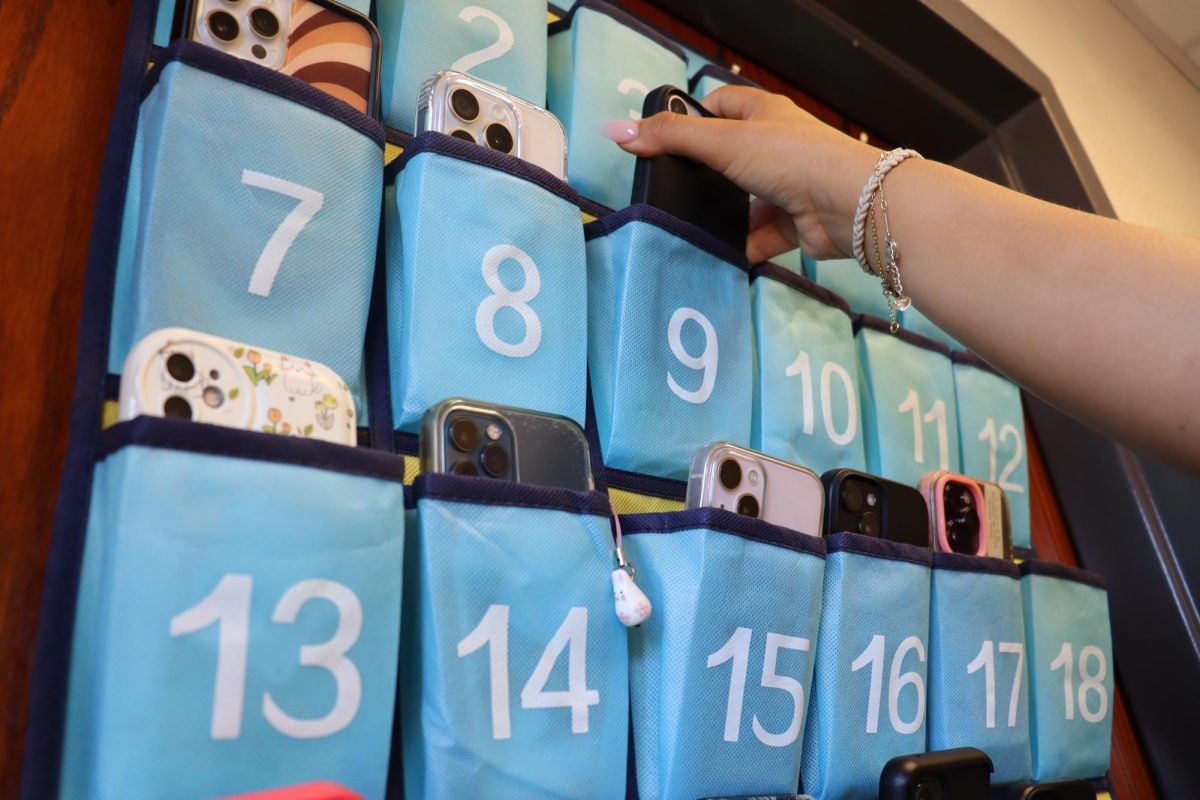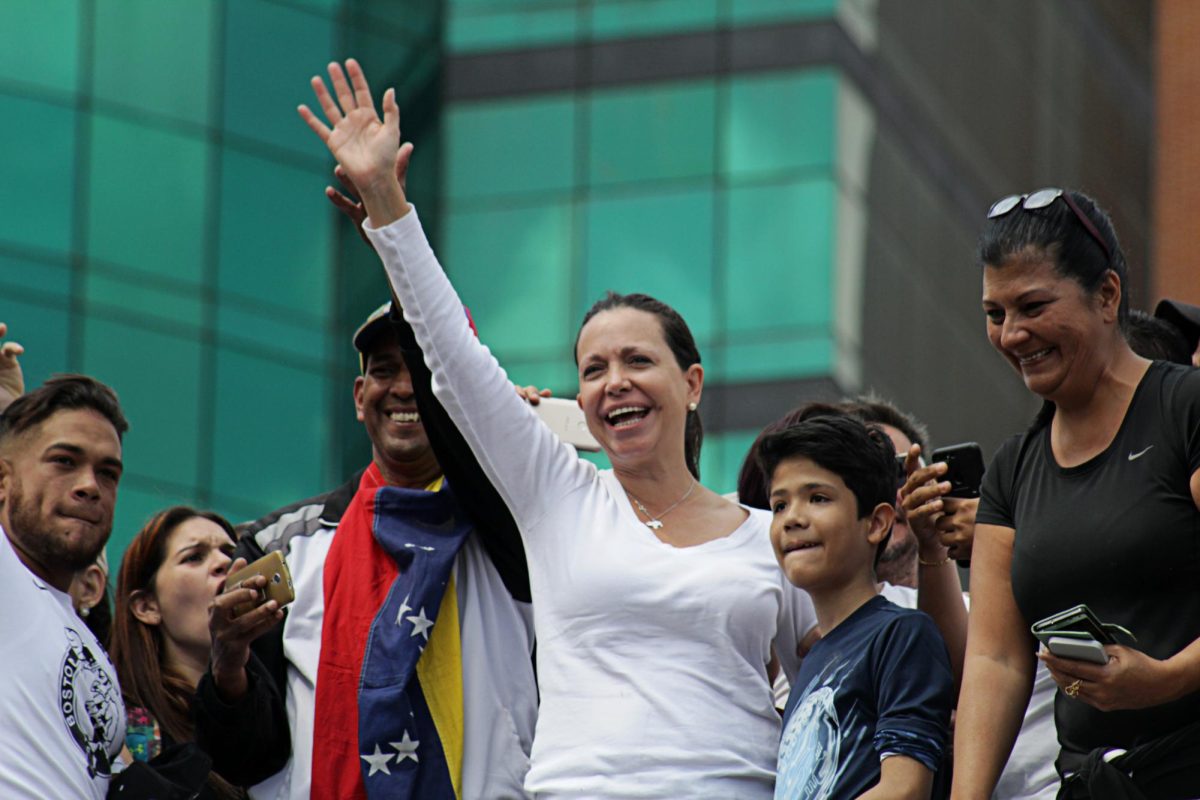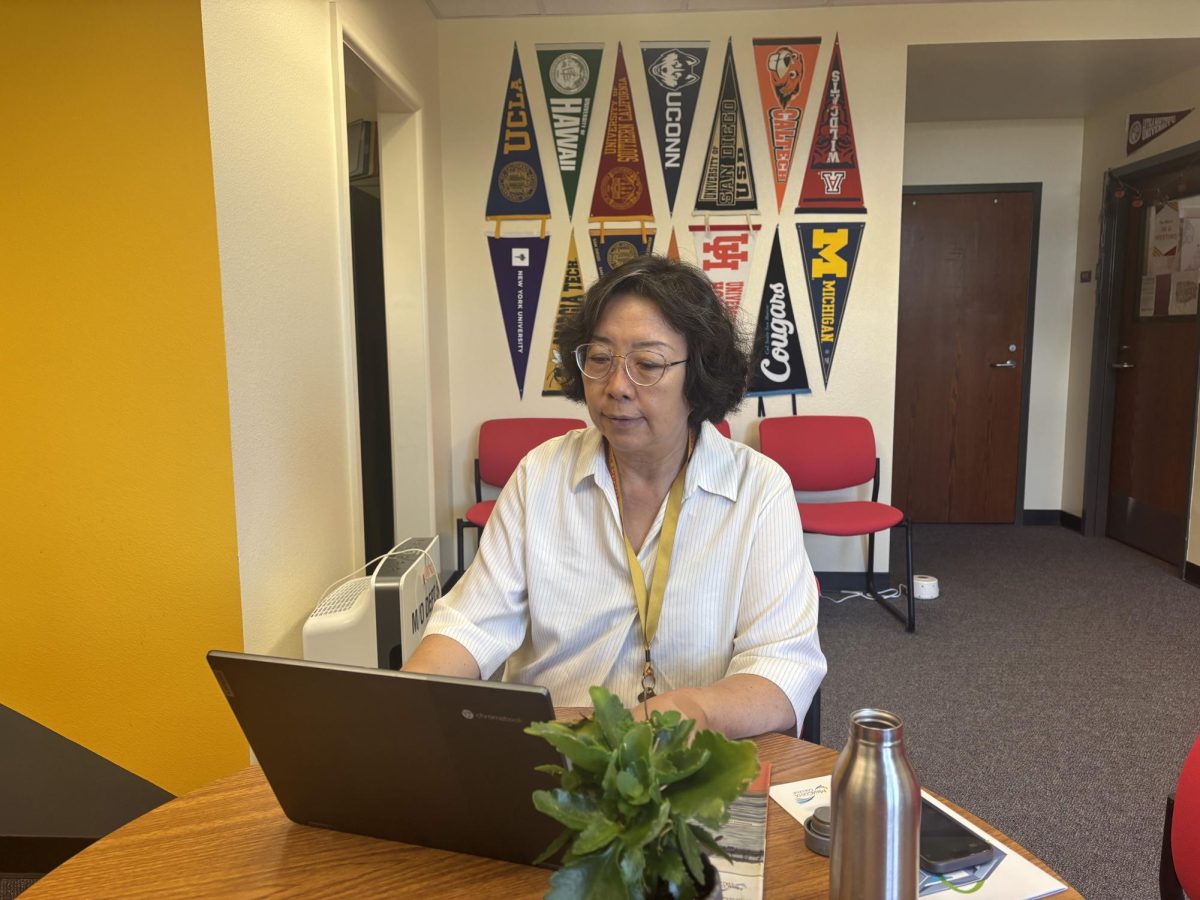Starting in the 2024-25 school year, the school will enforce a new Student Cell Phone Policy, banning student cell phone use during class times.
The policy requires students to place their cell phones in phone caddies or other inaccessible areas from bell to bell and prohibits phone use anywhere on campus during class time, as well as list other specific guidelines. Violations can result in interventions including detention and parent meetings, depending on frequency of offenses.
The school presented data from The Anxious Generation, which shows a correlation between mental illness among teenagers and the use of social media, particularly through smart phones.
“Data clearly shows that smartphones and social media erode human connection, increase depression, and enable addictions,” the school stated in the policy document.
While this is the first school year the policy will be implemented, many teachers had already prohibited the unnecessary use of cell phones during class time in previous years. For Roxzana Sudo, an English teacher, the collection of phones in her classroom has been enforced long before this policy was presented.
“One of the things I think that’s important to remember with the phone caddies and students really focusing in class is that that’s a behavior that’s pro-them … It’s really helpful for students to just be able to put the phone away and remember that, ‘this is the task I have to do right now,’ which is something that everyone has to know how to do in the future,” Sudo said.
The English department came to a united policy on student smartphones last school year and has uniformly been using phone caddies to take attendance since.
On the other hand, some teachers, like physics teacher Eli Aghassi, are collecting students’ cell phones for the first time this fall.
“I was actually planning to do this anyway. I know a few other teachers were also planning to do the same,” Aghassi said. “Last year, there were a lot of people playing games on their phones when they shouldn’t have been. And there were some students who really just couldn’t put it down … I was just kind of done with it and really frustrated with it.”
While the final creation of the policy was made by the administration, it was motivated by the various feedbacks and practices from departments, according to Principal Rob Coppo.
“Everyone’s in favor of it, or at least who’s talked to me. So the feedback was really, ‘how do we make it work?’ And it was really collaborative and productive,” Coppo said.
The policy standardizes the cell phone rules that used to vary by classroom and were dependent on each teacher.
“I’m not here to be super into the punitive measures here. I want kids to make good decisions for themselves, because we are trying to protect them, really, from themselves, from the negative mental health impacts and then the bad choices when they use the camera in ways that I’ve seen kids get in trouble and expelled for,” Coppo said.
SDUHSD middle schools are placing similar approaches, as they instruct phones to be silenced or turned off and put away during either the entire school day or during class.
While it is still common to see students dislike having their phones taken away, many actually find it helpful.
“I’ve actually had feedback from students that they like it. I’m sure that’s not universal, I’m sure some students really hate it, but several of my students have told me that they think it is better,” Aghassi said.
For other students, the new policy is not as dramatic of a change.
“As a person who doesn’t really use the phone that much, [TPHS’s policy] hasn’t made a difference for me,” Andre Wang (9) said.
Pratch Maneerat (12) expressed a similar opinion.
“In class, it’s fine because they normally take your phones anyways unless it’s harder classes than they let you keep it, but you don’t use it anyways,” Maneerat said. “The thing I don’t like is how they don’t let you use it during free periods if you have to stay on campus, I don’t think that’s necessary; what are we going to do except be on our electronics anyways?”
While various thoughts surround it, teachers in all departments are implementing the policy.
“I just want to thank our staff in particular, and our students. Everyone’s rolled with it and has respected it … so I’m really proud of the school for how they’ve responded,” Coppo said.
In the background of this policy is California’s progression towards making school campuses phone-free. At the beginning of this school year, Governor Newsom sent a letter to all in-state school districts encouraging them to restrict the use of cell phones.
Governor Newsom signed in 2019 the California Assembly Bill 272 (Muratsuchi), which “grants school districts the authority to regulate the use of smartphones during school hours.” He is working with the legislature to further limit use, and this June announced efforts to limit phone use throughout the whole school day.
Districts such as Los Angeles Unified, Santa Barbara Unified and Bullard High have already limited smartphone use on campus, an action applauded by Newsom and set as an example for other districts to follow.
The new policy is in accordance with such measures.
“Many of our teachers were already doing it, and our department chairs have been talking in the past about, ‘can we have a standard policy?’ Coppo said. “And then this summer, I decided to … because I wanted to get out ahead … I was worried Governor Newsom was going to come down with a statewide ban, and I’d rather have something in place before so we’re prepared for it.”









